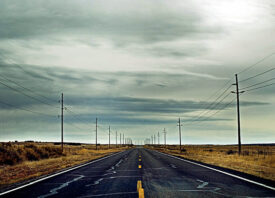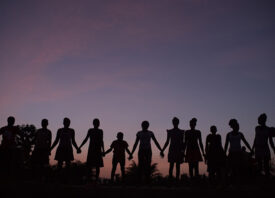Search this site
17 Photographers on the Best Way to Learn

Laura Pannack: Keep shooting, keep thinking, keep making mistakes.
Jonathan May: I would say to totally immerse yourself in the craft. Do
a course/degree, or if you don’t have the time, then read books on the technical aspect, study famous photographers, find a mentor and work/assist them for free to start so they can teach you and also critique your work. Watch documentaries. Follow blogs to stay on top of the current trends. Learn the power of editing/selecting your photographs, as in what makes the shot strong, and of course always be shooting so you can constantly be improving your work/brand by replacing the weaker images. It is very important to find your style and work on bodies of work rather than single images, and to do this, I would say to photograph what you enjoy.Seth Casteel: I am a completely self-taught photographer, and my motto has always been shoot, shoot, shoot, and experiment! If there’s something you want to create, go create it. Find a way to do it no matter what.
Ian Willms: “Shoot, shoot, think. Think, think, shoot.” — Frank O’Connor
Wasma Mansour: I think there are many ways to enrich one’s knowledge of photography and to improve their practice – besides academia. Photobooks for me have been a great source. Photography blogs are also great platforms because these often include overviews of established photographers’ practices as well as interviews. For the technical aspect of photography, I often search on YouTube. Lastly, practice! Sometimes the best way is to do a mock-up of a particular shoot, if possible, to test the composition, lighting, etc.

U.S. Presidential hopeful Barack Obama (D-IL) greets a crowd of about 4,000 people at an event in Madison, Wisconsin, on Oct. 15, 2007. © Yana Paskova
Yana Paskova: I believe in anything that allows for mastery of one’s skills of observation and the ability to put them to practice toward their craft. I didn’t go to photo school; my university (University of Wisconsin-Madison) unfortunately did not offer a photo major. Instead, I trained myself in a supplementary interest, by majoring in the writing/reporting aspects of journalism, and also worked at my college newspaper, The Badger Herald, which was thankfully quite accomplished. There, I started as a reporter, moved on to being an editor, then a photographer and a photo editor, all while alternating magazine and newspaper internships in both writing and photo.
The purpose of this was to immerse myself in a pool of people in the business who were successfully doing what I aspired toward, to observe (introspection) and myself be observed (feedback). Following that track post-graduation, I moved to campaign event-heavy Iowa in the months leading up to the 2008 presidential election, which allowed me not only to see what others were doing well, but also to practice a way to stand out. It is how my relationship with many of my current clients began!
Jasper White: Look, and then look again. It’s all about what speaks to you, or makes you smile, engages you. But this only happens if you’re really looking and open.
Diana Markosian: I don’t think it takes a formal education to become a photographer. I learned to shoot by shooting. In college, I studied history because I wanted to be a writer. I wanted to be aware of the world and my role in it. I am still finding my voice. But I think the more interested you are in your surroundings, the more interesting your images will be.
J.M. Giordano: “If you’re young and have the time, go and study. Study anthropology, sociology, economy, geopolitics. Study so that you’re actually able to understand what you’re photographing. What you can photograph and what you should photograph.”- Sebastião Salgado.
Best quote about photography ever, as far as I’m concerned. I collect photo books, so I tell my interns and students at lectures that they should study all the photobooks they can. Copy a famous photographer’s style. Eventually, you’ll develop your own style.
Cristina de Middel: Making zillions of pictures, making trillions of mistakes and moving for good as far as you can from your comfort zone.
Peter Dench: Life life; meet new people; try new experiences; listen to those that know.

Karaba Brick Quarry, Burkina Faso © David Pace
David Pace: Look at a lot of photographic images and become familiar with the history of the medium. Go to museums and galleries. Look at monographs and other photography books. Analyze the images that make an impression on you. Pay attention to composition, light, and color and try to recreate them. Practice. Learn from your mistakes as well as your successes.
As trumpeter Miles Davis said, “You have to play a long time to be able to play like yourself.” The same is true of photography. You have to do it for a while and imitate the photographers you admire before you develop your own style.
Molly Landreth: 1.Get out in the world and take pictures that are important to you and then figure out why. 2. Find a group of photographers or artists that you trust, connect with and learn from. 3. Look at lots of photography online, in books and in galleries!
Benjamin Lowy: Consume as much art – photography, painting, everything that you can. And then get out there and practice.
Nancy Borowick: Always look for inspiration. Always look at others’ work, and never stop shooting. You never know where you will be inspired, and you just have to be open to the universe. Challenge yourself… if you do not like street photography, force yourself to do it, in your own way, and see how you grow and learn from that. Photography is an amazing gift and can be such a powerful tool if you are open to its possibilities.
Ron Haviv: This is a very personal decision. Some people need to be in a formal education environment, such as International Center of Photography, while others can take a workshop with me or others and reach a new level. The key is for people to understand what they need to succeed in educating themselves.
Bieke Depoorter: Stay honest to yourself.
Martin Usborne: Look at other photographers, then go out and shoot. Look at other photographers, then go out and shoot. And so the merry-go-round goes round…


